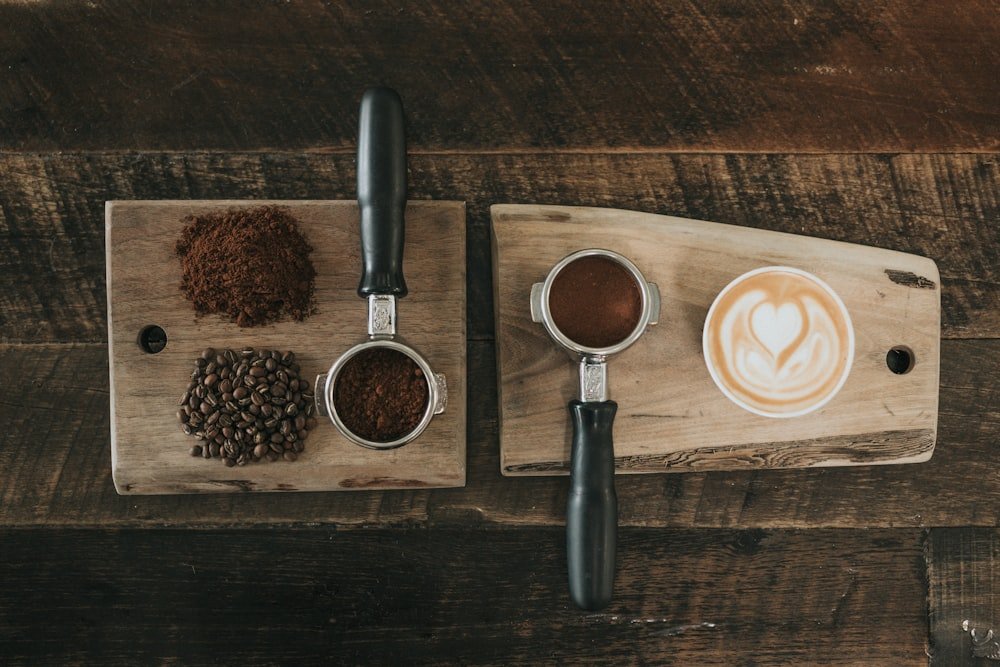The caffeine content in a cup of coffee may differ depending on its type, serving size, and the variety of beans used.
Coffee stands as the primary dietary source of caffeine.
Typically, an average cup of coffee contains approximately 95 mg of caffeine.
Nevertheless, the caffeine levels can vary significantly across different coffee beverages, ranging from nearly negligible amounts to exceeding 500 mg.

This comprehensive guide offers detailed insights into the caffeine content found in various types and brands of coffee.
What Factors Affect Caffeine Content?
The caffeine levels in coffee are influenced by various factors, including:
Variety of coffee beans:
Caffeine content varies naturally throughout coffee bean varieties.
Roasting method:
Although darker roasts have a more complex flavor profile, lighter roasts typically contain more caffeine.
Coffee preparation method:
Different coffee varieties, such as conventional brewed coffee, espresso, instant coffee, and decaf coffee, have dramatically different caffeine contents.
Serving size:
The phrase “one cup of coffee” can refer to a broad variety of sizes, ranging from 30 to 700 ml (1 to 24 oz), which has a substantial impact on the amount of caffeine in total.
How Much Caffeine Is in a Cup of Coffee?
The sort of coffee you consume is the primary factor that determines its caffeine concentration.
Brewed Coffee
Brewing stands as the prevalent method for coffee preparation in both the US and Europe. Commonly referred to as regular coffee, brewed coffee involves pouring hot or boiling water over ground coffee beans, typically held within a filter.
A standard serving of brewed coffee, measuring 8 ounces, typically contains approximately 70–140 mg of caffeine, with an average of around 95 mg per cup.
Espresso
A tiny amount of hot water or steam is forced through finely ground coffee beans to create espresso. Espresso quantities are usually smaller than conventional coffee servings, despite the fact that espresso contains more caffeine per volume.
A single espresso shot usually weighs between 30 and 50 milliliters (1 and 75 ounces) and has 63 milligrams of caffeine per serving. That means that a double espresso has about 125 mg of caffeine.
Espresso-Based Drinks
Numerous beloved coffee beverages comprise espresso shots combined with different types and quantities of milk. These include lattes, cappuccinos, macchiatos, and Americanos. As milk doesn’t contribute additional caffeine, these drinks offer the same caffeine content as straight espresso.
On average, a single (small) serving contains approximately 63 mg of caffeine, while a double (large) serving contains about 125 mg.
Instant Coffee
The method of freeze-drying or spray-drying brewed coffee yields large, dry bits that easily dissolve in water, which is how instant coffee is made.
There is no need for brewing when making instant coffee; it is just a matter of adding one or two tablespoons of dried coffee to hot water.
One cup of instant coffee usually contains between 30 and 90 mg of caffeine, which is less than normal coffee.
Decaf Coffee
Decaf coffee has some caffeine, despite its name. There is a range of 0 to 7 mg of caffeine per cup, with an average of roughly 3 mg. Nonetheless, some types might have more caffeine content due to variables like the kind of coffee, the process of decaffeination, and the size of the cup.
Are Commercial Brands More Caffeinated?
Certain commercial coffee brands may boast higher caffeine levels than standard home-brewed coffee. Additionally, coffee shops are known for their oversized cup sizes, which can reach up to 700 ml (24 oz). The coffee content in such large cups is comparable to approximately 3–5 regular-sized cups of coffee.
Starbucks
Starbucks, renowned as one of the world’s most prominent coffee chains, offers some of the most potent caffeinated beverages.
The caffeine content in Starbucks’ brewed coffee is as follows:
- Short (8 oz): 180 mg
- Tall (12 oz): 260 mg
- Grande (16 oz): 330 mg
- Venti (20 oz): 415 mg
Additionally, a single shot of espresso at Starbucks packs 75 mg of caffeine. Consequently, all small, espresso-based drinks, such as lattes, cappuccinos, macchiatos, and Americanos, among others, also contain 75 mg of caffeine.
For larger sizes, which may include two or even three espresso shots (16 oz), the caffeine content increases to 150 or 225 mg.
Decaf coffee from Starbucks contains approximately 15–30 mg of caffeine, with the exact amount varying based on cup size.
McDonald’s
Coffee is available everywhere thanks to McDonald’s, a global fast-food franchise best known for its McCafe brand. They do not, however, standardize or offer exact estimations for the amount of caffeine in their coffee, in contrast to some of its rivals.
The following is an estimate of the approximate caffeine level of their brewed coffee:
- Tiny (12 oz): around 109 mg
Approximately 145 mg for medium (16 oz) and 180 mg for large (21–24 oz).
Their espresso portions include about 71 mg of caffeine apiece, whereas the amount of caffeine in their decaf coffee varies depending on the size of the cup.
Is Caffeine Something to Worry About?
While coffee is rich in antioxidants and has been linked to various health benefits, excessive caffeine intake can lead to adverse effects such as anxiety, sleep disturbances, heart palpitations, and restlessness.
In general, consuming 400–600 mg/day of caffeine is considered safe for most individuals. This roughly translates to 6 mg/kg (3 mg/lb) of body weight or approximately 4–6 average cups of coffee per day.
However, it’s important to note that caffeine affects individuals differently. Some people are highly sensitive to its effects, while others may not experience any significant impact even with large quantities. These variations are largely attributed to genetic differences.
Therefore, determining the optimal caffeine intake for your own body may require some trial and error.




